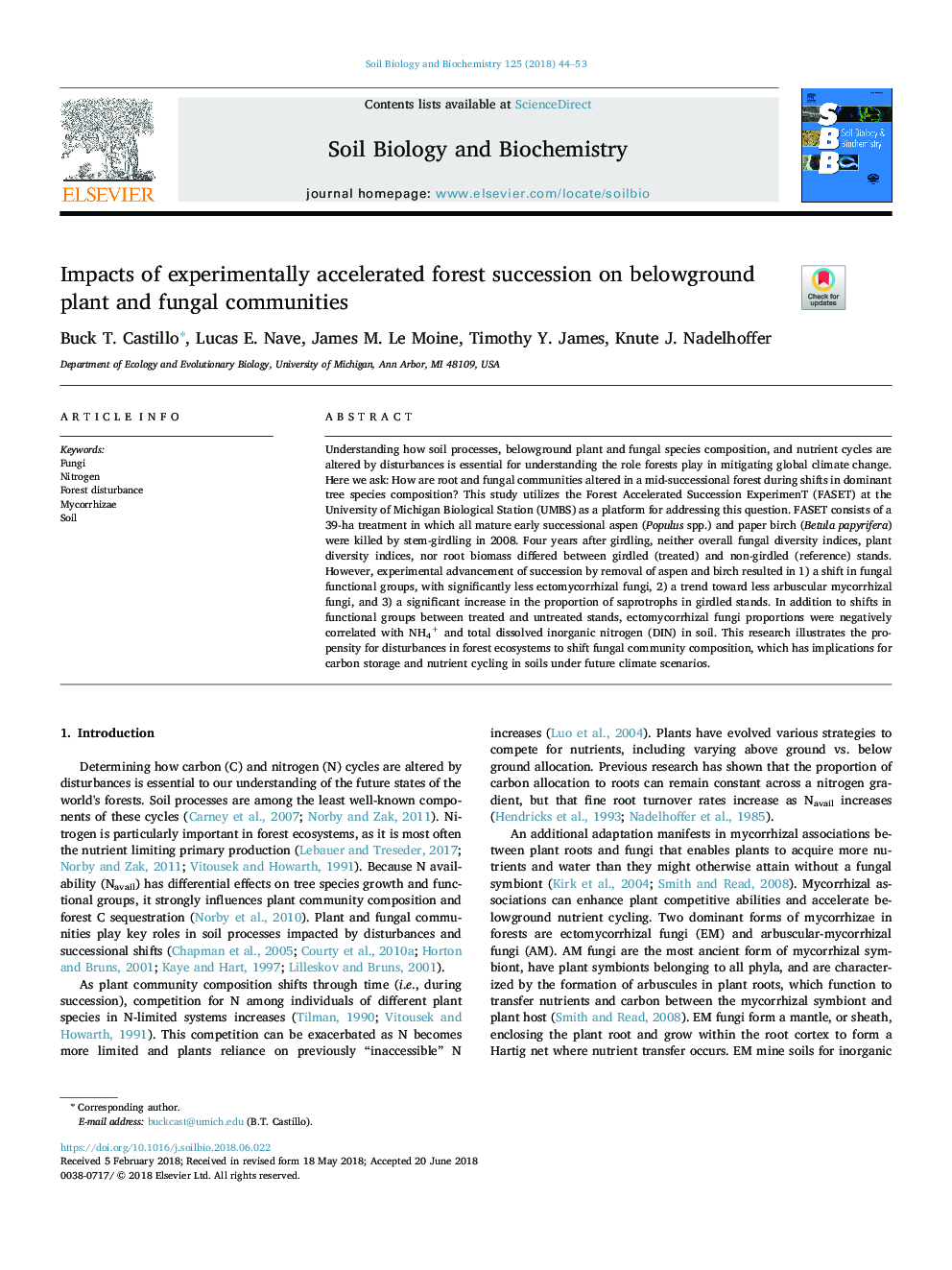| Article ID | Journal | Published Year | Pages | File Type |
|---|---|---|---|---|
| 8362420 | Soil Biology and Biochemistry | 2018 | 10 Pages |
Abstract
Understanding how soil processes, belowground plant and fungal species composition, and nutrient cycles are altered by disturbances is essential for understanding the role forests play in mitigating global climate change. Here we ask: How are root and fungal communities altered in a mid-successional forest during shifts in dominant tree species composition? This study utilizes the Forest Accelerated Succession ExperimenT (FASET) at the University of Michigan Biological Station (UMBS) as a platform for addressing this question. FASET consists of a 39-ha treatment in which all mature early successional aspen (Populus spp.) and paper birch (Betula papyrifera) were killed by stem-girdling in 2008. Four years after girdling, neither overall fungal diversity indices, plant diversity indices, nor root biomass differed between girdled (treated) and non-girdled (reference) stands. However, experimental advancement of succession by removal of aspen and birch resulted in 1) a shift in fungal functional groups, with significantly less ectomycorrhizal fungi, 2) a trend toward less arbuscular mycorrhizal fungi, and 3) a significant increase in the proportion of saprotrophs in girdled stands. In addition to shifts in functional groups between treated and untreated stands, ectomycorrhizal fungi proportions were negatively correlated with NH4+ and total dissolved inorganic nitrogen (DIN) in soil. This research illustrates the propensity for disturbances in forest ecosystems to shift fungal community composition, which has implications for carbon storage and nutrient cycling in soils under future climate scenarios.
Related Topics
Life Sciences
Agricultural and Biological Sciences
Soil Science
Authors
Buck T. Castillo, Lucas E. Nave, James M. Le Moine, Timothy Y. James, Knute J. Nadelhoffer,
